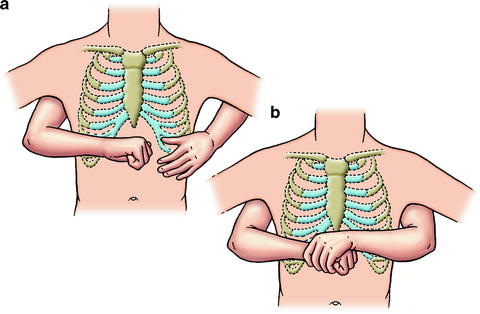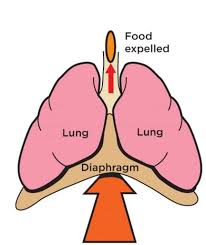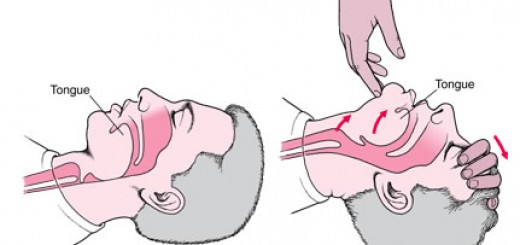How do abdominal thrusts help a choking victim?
Choking is one of the leading causes of accidental death worldwide. Choking occurs when an object (‘foreign body’) blocks the upper airway of the victim. This obstruction prevents air from reaching the lungs causing the body & brain to become starved of oxygen. Eventually, cardiac arrest will occur.
Food is a common cause of accidental choking, especially in older people or people with medical conditions which affect their ability to swallow.
Abdominal thrusts for choking victims
Abdominal thrusts are a first aid technique that can be used during a choking emergency. Current guidelines recommend abdominal thrusts should be used after attempting back blows (hitting the victim on the back).
So how do abdominal thrusts work?
To give an abdominal thrust, the first aider stands behind the victim. They make a fist just above the victim’s navel (belly button). The other hand grasps this fist and pulls sharply inwards and upwards.

The sharp inwards and upwards movement during an abdominal thrust pushes the diaphragm upwards. The lungs are compressed resulting in an increase in air pressure. The increase in air pressure forces air up the trachea which may dislodge the object in the upper airway.

Abdominal thrusts may not work on the first attempt. Therefore, up to five abdominal thrusts can be attempted in quick succession. Current CPR guidelines recommend switching between five back blows and five abdominal thrusts.
Can abdominal thrusts cause injury to the victim?
Due to the force involved in delivering an abdominal thrust, there is a small risk of damage to internal organs. Even if the abdominal thrust is successful in dislodging the object, the patient should still seek professional medical attention.
It is important to remember that the risk of causing a serious injury by performing an abdominal thrust is very low. This technique is a potentially lifesaving procedure and can be very effective during a choking emergency.





